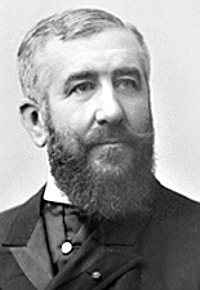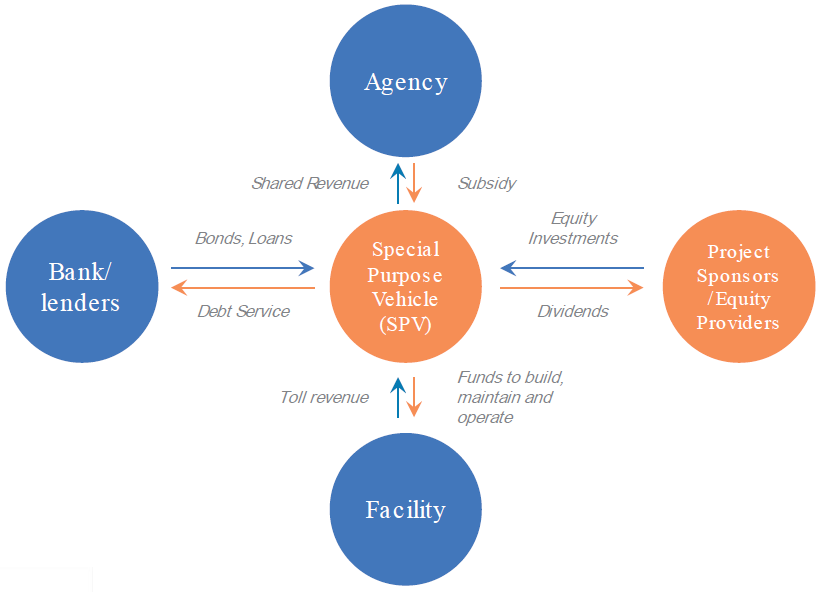|
Aigues-Vives Tramway
The Aigues-Vives tramway (French Chemin de Fer d'Aigues-Vives-Bourg a Aigues-Vives PLM or colloquially La Lignette) was a long narrow-gauge railway with a gauge of in Aigues-Vives in the department Gard in Southern France. It operated from 1892 to 1901. History Planning The secondary railway with a gauge of connected the Aigues-Vives station (fr) on the Nîmes- Lunel line of the Chemins de fer de Paris à Lyon et à la Méditerranée (PLM) with the local fruit processing companies. The companies produced mainly wine, jams and fruit syrups as well as wooden barrels for the transport of these fruit products. Gard's member of the National Assembly, Émile Jamais, who was born in Aigues-Vives, belonged to the railway committee that was set-up in June 1886 for obtaining the concession. This explains why the committee was well acquainted with the laws governing the construction of narrow-gauge railways and the necessary application procedure. The concession for the local railw ... [...More Info...] [...Related Items...] OR: [Wikipedia] [Google] [Baidu] |
Nîmes
Nîmes ( , ; oc, Nimes ; Latin: ''Nemausus'') is the prefecture of the Gard department in the Occitanie region of Southern France. Located between the Mediterranean Sea and Cévennes, the commune of Nîmes has an estimated population of 148,561 (2019). Dubbed the most Roman city outside Italy, Nîmes has a rich history dating back to the Roman Empire when the city had a population of 50,000–60,000 and was the regional capital. Several famous monuments are in Nîmes, such as the Arena of Nîmes and the Maison Carrée. Because of this, Nîmes is often referred to as the " French Rome". Origins Nimes is situated where the alluvial plain of the Vistrenque River abuts the hills of Mont Duplan to the northeast, Montaury to the southwest, and to the west Mt. Cavalier and the knoll of Canteduc. Its name appears in inscriptions in Gaulish as ''dede matrebo Namausikabo'' ("he has given to the mothers of Nîmes") and "''toutios Namausatis''" ("citizen of Nîmes"). Nemausus was the ... [...More Info...] [...Related Items...] OR: [Wikipedia] [Google] [Baidu] |
Defunct Railroads
{{Disambiguation ...
Defunct (no longer in use or active) may refer to: * ''Defunct'' (video game), 2014 * Zombie process or defunct process, in Unix-like operating systems See also * * :Former entities * End-of-life product * Obsolescence Obsolescence is the state of being which occurs when an object, service, or practice is no longer maintained or required even though it may still be in good working order. It usually happens when something that is more efficient or less risky r ... [...More Info...] [...Related Items...] OR: [Wikipedia] [Google] [Baidu] |
Decauville
Decauville () was a manufacturing company which was founded by Paul Decauville (1846–1922), a French pioneer in industrial railways. Decauville's major innovation was the use of ready-made sections of light, narrow gauge track fastened to steel sleepers; this track was portable and could be disassembled and transported very easily. The first Decauville railway used gauge; Decauville later refined his invention and switched to and gauge. History Origins In 1853 Paul Decauville's father, Amand, created a boilermaking workshop on the family farm in order to set up distilleries on the farms to the east of Paris. In 1864, Amand asked his eldest son, Paul, to come and help him following health problems. Very quickly, the latter seeks to improve the functioning of the estate. Very developed under the Second Empire in the northern half of France, the production of sugar beet and its refining into sugar, is linked to that of alcoholic products such as fuel. Amand will therefore en ... [...More Info...] [...Related Items...] OR: [Wikipedia] [Google] [Baidu] |
Nemours
Nemours () is a commune in the Seine-et-Marne department in the Île-de-France region in north-central France. Geography Nemours is located on the Loing and its canal, c. south of Melun, on the Moret–Lyon railway. Nemours – Saint-Pierre station has rail connections to Montargis, Melun, Nevers and Paris. History Nemours is supposed to derive its name from the woods (''nemora'') in the midst of which it formerly stood, and discoveries of Gallo-Roman remains indicate its early origin. It was captured by the English in 1420, but derives its historical importance rather from the lordship, afterwards Duchy of Nemours, and the fief lords the Duke of Nemours to which it gave its name. In 1585 a treaty revoking previous concessions to the Protestants was concluded at Nemours between Catherine de' Medici and the Guises. Demographics Inhabitants are called ''Nemouriens''. Sights The church, which dates mainly from the sixteenth century, has a handsome wooden spire. The feudal c ... [...More Info...] [...Related Items...] OR: [Wikipedia] [Google] [Baidu] |
Orenstein & Koppel
Orenstein & Koppel (normally abbreviated to "O&K") was a major Germany, German engineering company specialising in railway vehicles, escalators, and heavy equipment. It was founded on April 1, 1876 in Berlin by Benno Orenstein and Arthur Koppel. Originally a general engineering company, O&K soon started to specialise in the manufacture of railway vehicles. The company also manufactured heavy equipment and escalators. O&K pulled out of the railway business in 1981. Its escalator-manufacturing division was spun off to the company's majority shareholder at the time, Krupp, Friedrich Krupp AG Hoesch-Krupp, in 1996, leaving the company to focus primarily on construction machines. The construction-equipment business was sold to New Holland Construction, at the time part of the Fiat Group, in 1999. Founding and railway work The Orenstein & Koppel Company was a mechanical engineering, mechanical-engineering firm that first entered the railway-construction field, building locomotives a ... [...More Info...] [...Related Items...] OR: [Wikipedia] [Google] [Baidu] |
Concession (contract)
A concession or concession agreement is a grant of rights, land or property by a government, local authority, corporation, individual or other legal entity. Public services such as water supply may be operated as a concession. In the case of a public service concession, a private company enters into an agreement with the government to have the exclusive right to operate, maintain and carry out investment in a public utility (such as a water privatisation) for a given number of years. Other forms of contracts between public and private entities, namely lease contract and management contract (in the water sector often called by the French term ''affermage''), are closely related but differ from a concession in the rights of the operator and its remuneration. A lease gives a company the right to operate and maintain a public utility, but investment remains the responsibility of the public. Under a management contract the operator will collect the revenue only on behalf of the govern ... [...More Info...] [...Related Items...] OR: [Wikipedia] [Google] [Baidu] |
Tank Car
A tank car ( International Union of Railways (UIC): tank wagon) is a type of railroad car (UIC: railway car) or rolling stock designed to transport liquid and gaseous commodities. History Timeline The following major events occurred in the years noted: *1865: Flatcars with banded wooden planks or decking mounted on top are employed for the first time to transport crude oil from the fields of Pennsylvania during the Pennsylvanian oil rush. Laurence Myers of Philadelphia invented the ''Rotary Oil Car'', as he named it. It was an improvement on a patent from 1851 of a freight car for transporting coal. The new invention patented on July 18, 1865, was for the transportation of crude oil and petroleum. It was the first appearance of an oil tank on a railroad flatcar. Three books mention his invention. *1869: Wrought iron tanks, with an approximate capacity of per car, replace wooden tanks. *1888: Tank-car manufacturers sell units directly to the oil companies, with capaciti ... [...More Info...] [...Related Items...] OR: [Wikipedia] [Google] [Baidu] |
National Assembly (France)
The National Assembly (french: link=no, italics=set, Assemblée nationale; ) is the lower house of the bicameral French Parliament under the Fifth Republic, the upper house being the Senate (). The National Assembly's legislators are known as (), meaning "delegate" or "envoy" in English; etymologically, it is a cognate of the English word ''deputy'', which is the standard term for legislators in many parliamentary systems). There are 577 , each elected by a single-member constituency (at least one per department) through a two-round system; thus, 289 seats are required for a majority. The president of the National Assembly, Yaël Braun-Pivet, presides over the body. The officeholder is usually a member of the largest party represented, assisted by vice presidents from across the represented political spectrum. The National Assembly's term is five years; however, the President of France may dissolve the Assembly, thereby calling for new elections, unless it has been dissolv ... [...More Info...] [...Related Items...] OR: [Wikipedia] [Google] [Baidu] |
Lunel, Hérault
Lunel (; Provençal: ''Lunèl'') is a commune in the Hérault department in southern France. According to legend, Lunel was founded by Jews from Jericho in the first century. It had a Jewish population by the first millennium, and an ancient synagogue is located there. Lunel is located east of Montpellier and southwest of Nîmes (Gard). Lunel station has rail connections to Narbonne, Montpellier, Nîmes and Avignon. History The ancient Roman site of Ambrussum is located nearby. The troubadour Folquet de Lunel was from Lunel. Lunel was a centre of Jewish learning. It is thought that the family of Rashi (1040–1105), the great Rabbi and commentator, originated in Lunel. Other scholars include Jonathan of Lunel, Meshullam ben Jacob of Lunel, his son Aaron ben Meshullam ben Jacob of Lunel, Abraham ben David who taught in Lunel before moving to Posquières, and Asher ben Meshullam of Lunel. Lunel was the birthplace of Louis Feuillade (1873–1925), film director fro ... [...More Info...] [...Related Items...] OR: [Wikipedia] [Google] [Baidu] |






